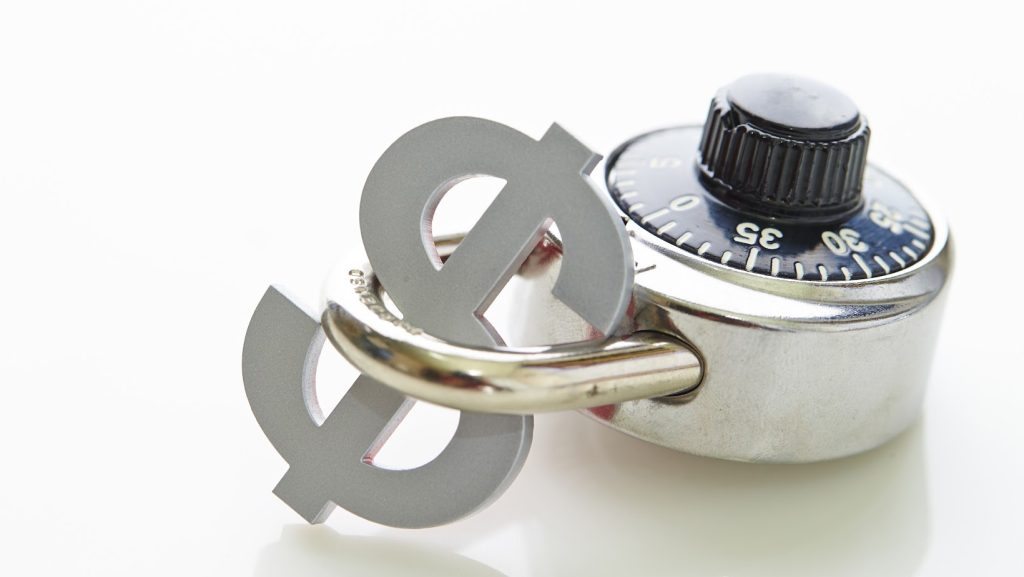December 12, 2025
Fed Rate Cut Signals Mixed Impacts on Mortgage & Housing Markets
Today’s mortgage and housing headlines were dominated by the Fed Rate Cut and what it means for markets, legislation and home sales activity. The Federal Reserve’s quarter‑point cut drove modest improvements in mortgage rates and MBS pricing, but Fed Chair Jerome Powell made it clear that lower rates alone won’t fix deeper housing market constraints. Meanwhile, key bipartisan housing reform stalled in Congress, and Powell emphasized the mortgage lock‑in effect as a persistent drag on mobility and market fluidity. For mortgage pros and real estate professionals, the focus keyword Fed Rate Cut will be central to understanding today’s market dynamics and where opportunities lie in 2026.

Mortgage Bonds & Rates Improve After Fed Rate Cut
Read the Full Story → Mortgage News Daily
Mortgage News Daily reported that following the latest Fed Rate Cut, secondary mortgage markets and mortgage bond prices rallied modestly, pushing 30‑year fixed rates slightly lower to around 6.30%. Rates softened in part due to the decline in the 10‑year Treasury yield that accompanied the Fed’s decision. Current mortgage rate data shows small weekly improvements that reflect market optimism tied to monetary policy easing. Still, broader economic forces and bond market behavior remain the primary drivers of mortgage rates.
MBS commentary noted that the Fed’s communication about future policy was cautious: while the cut is supportive, officials signaled they may pause further reductions if inflation pressures persist. That outlook has important implications for how long mortgage rates could stay elevated, even after the Fed takes action meant to lower borrowing costs.
Mortgage professionals are watching markets for how this Fed Rate Cut plays out in mortgage pricing and loan demand, especially as lenders adjust pricing relative to bond yields and current homebuyer interest.
Join the Daily LOBC Live Call
If you’re digesting all this Fed Rate Cut news and wondering what moves to make next — join the Daily LOBC live call! Every weekday morning, we break down market news before lenders and agents get to their desks. Coaches and guest experts share actionable strategies on navigating rate moves, pricing tips to stay competitive, and insights on how to capture more business when volatility hits.
Whether it’s mastering price locks, understanding rate sheets, or talking buyers off the mortgage rate cliff, LOBC covers it all in 30 minutes or less — free. You’ll walk away with perspective on current mortgage spreads, pipeline management tactics, and the confidence to talk to prospects and referral partners about why today’s Fed Rate Cut matters.
Click the live stream image to join the call.
ROAD to Housing Act Pulled from Defense Bill — Reform Delayed
Read the Full Story → Scotsman Guide
Scotsman Guide reports that a major bipartisan housing bill, the ROAD to Housing Act, was removed from a must‑pass defense bill, pushing meaningful housing reform efforts into 2026. The bill would have included measures to address barriers to homeownership and support housing supply — long sought after in an era shaped by elevated mortgage rates and market lock‑in dynamics.

Its absence underscores how Fed Rate Cut headlines aren’t the only policymakers’ tool in trying to support the housing market. Structural policy efforts still face political hurdles, meaning legislative help might lag behind the monetary policy shifts that markets react to daily.
Mortgage and real estate professionals have noted that without complementary housing supply reforms, rate cuts alone may have limited impact on long‑term affordability and inventory shortages.
Powell Flags Mortgage Lock‑In Effect as Market Drag
Read the Full Story → MPAMAG
In comments following the Fed’s rate decision, Federal Reserve Chair Jerome Powell acknowledged that even with the Fed Rate Cut, housing market challenges are deeper than just elevated interest rates. Powell said a 25‑basis‑point reduction in the federal funds rate “may not make much of a difference” for housing activity given structural headwinds.

Powell specifically pointed to low housing supply and the mortgage lock‑in effect, where homeowners with pandemic‑era low rates are reluctant to sell because they would have to take on higher mortgage rates today — a dynamic that has limited listings and slowed transactions.
While monetary policy influences broader costs, Powell emphasized that the housing shortage and market mobility issues are not things the Fed can fix on its own, suggesting that further Fed Rate Cut moves won’t solve inventory or construction bottlenecks.
Loan Officer Perspective
Loan officers can use the current Fed Rate Cut narrative to educate borrowers on why mortgage rates are moving differently than Fed funds. While the federal funds rate influences short‑term borrowing costs, mortgage rates are more closely tied to bond markets and supply/demand dynamics. This is a great opportunity to explain how MBS pricing impacts loan pricing, and why savvy borrowers might still find good options now rather than waiting. Emphasize the importance of effective rate locking tools and crystal‑clear communication on rate forecasts.
Real Estate Agent Perspective
For agents, the Fed Rate Cut gives a chance to reignite conversations with buyers who may have previously shelved their plans. Even modest downward shifts in mortgage rates can improve affordability, and pairing rate insights with localized inventory data can help agents make persuasive cases for clients to revisit the market. At the same time, be sure to address the lock‑in effect: many homeowners may be holding on due to their low existing rates, so creative strategies around pricing and making moves are key.
Powered by: Mortgage Marketing Animals
Important Links
Share this:
December 11, 2025
FHA Refi Boom Signals Market Momentum and 3D Construction Shakes Up the Future
This week’s real estate and mortgage news highlights a surprising FHA refinance boom that led to a jump in mortgage demand, a modest rise in buyer-agent commissions, and an eyebrow-raising move by Walmart into 3D-printed commercial real estate. These stories paint a picture of a market finding new energy even amid challenges, and a future that’s being reshaped by innovation. Whether you’re helping clients refinance, negotiating commissions, or just marveling at 3D-printed buildings, the industry continues to offer both opportunities and surprises. The focus keyword this week: FHA Refi Boom.
FHA Refi Boom Leads Surprise Jump in Mortgage Demand
Read the Full Story → MPAMAG
A new report from the Mortgage Bankers Association shows a surprising 2.8% weekly jump in mortgage applications, driven largely by a spike in FHA-backed refinances. These loans increased 19% in a single week — a strong signal that borrowers are responding to small improvements in rates and economic sentiment.

FHA refinance activity now makes up nearly 14% of all loan applications, the highest level in over a year. Analysts say this reflects growing demand among borrowers with older or higher-rate loans, many of whom may not have benefited from previous refi booms.
While overall market volume remains modest by historic standards, this FHA trend could mark a turning point. It suggests a segment of the market is finding renewed opportunity — especially where rate relief or cash-out refinances can improve household budgets.
Join the Daily LOBC Live Call
Want daily insight on headlines like this? The free LOBC Live Call happens every Monday–Friday from 8:30 to 9:00 AM ET. It’s a fast-paced Zoom session for mortgage professionals, covering market movement, prospecting tips, strategic plays, and more.
You’ll hear fresh strategies for leveraging current refi trends, navigating borrower conversations, and staying sharp on the latest mortgage shifts. Bonus: surprise guest appearances from top performers and coaches who walk the walk.
This isn’t fluff — it’s a tactical, daily reset that helps you stay on your game and in the know. Click the live stream image to join the call.
Buyer-Agent Commissions Edge Back Up in Q3 2025
Read the Full Story → Redfin
Despite last year’s legal shifts and commission reform headlines, buyer-agent compensation has actually crept up. According to Redfin, the national average buyer’s agent commission rose to 2.42% in Q3 2025, up from 2.36% a year ago.

Commissions on homes priced under $500,000 averaged 2.52%, nearly matching levels not seen since early 2023. Even in the $500,000–$999,999 range, buyer-agent commissions edged up to 2.32%, signaling a stable and slightly improving income landscape for agents.
The key takeaway? While the industry braced for dramatic commission slashes post-NAR settlement, consumer behavior has largely supported traditional models — for now. Buyers still value agent expertise, and the data backs it up.
Walmart Enters the 3D-Printed Real Estate Game
Read the Full Story → CNBC
Walmart is stepping into the world of 3D-printed construction — but not for houses. Partnering with materials company Sika, the retail giant is exploring how 3D printing can speed up and economize warehouse and distribution center builds.

While this doesn’t directly impact residential real estate or mortgage pipelines (yet), it does show how seriously major players are taking construction tech. Faster, cheaper building methods could eventually influence everything from commercial zoning to modular housing.
This one’s more of a “watch and wonder” moment than an action step — but it reminds us that innovation is accelerating. Real estate won’t look the same in 10 years… maybe not even in five.
Loan Officer Perspective
The FHA refi boom opens a door. Start pulling FHA borrower lists from the last 2–4 years — especially those still carrying rates above market or in need of cash-out options. With guidelines and rates favoring FHA scenarios right now, it’s a prime segment for outreach.
Commission stability also helps lenders — when agents are earning predictably, they’re more likely to refer and collaborate. Use this data to reinforce the value of strong partnerships.
Finally, keep one eye on innovation. 3D printing may not affect today’s mortgage deals, but commercial trends have a way of migrating into residential before you know it.
Real Estate Agent Perspective
The increase in buyer-agent commissions — despite legal and media pressure — is a win. It suggests buyers still want representation and are willing to pay for it, especially on entry-level homes. Stay confident in your value and be prepared to communicate it clearly.
FHA refis might not be your core business, but they influence market energy. When people refi, they also list, buy, and refer. Sync with your lender partners and watch for signs of movement in your database.
As for Walmart’s 3D-printed warehouses? It’s a glimpse at where the industry is going. If they can build a big box store in a week, what’s next? Apartment buildings? Single-family homes?
Home Buyer & Seller Perspective
If you have an FHA mortgage — or know someone who does — now could be a good time to explore a refinance. Lowering your rate or accessing equity could free up cash or reduce monthly payments.
Buying a home? The average commission paid to a buyer’s agent is still close to 2.5%, especially on homes under $500,000. That means you can expect strong representation — and you should ask what’s included in your agent’s services.
Big picture: The real estate world is evolving. Whether it’s refi programs or 3D-printed buildings, it’s smart to have a professional guide. Contact the loan officer or real estate agent who shared this post with you if you have questions or want to talk about your next move.
Frank’s Thoughts
Man — the refinance boom, commission rebound, and 3D printed real estate all in one week? Nuts.
I love the FHA refi data. For folks still carrying older, high-rate mortgages, this is a real chance to improve cash flow or tap equity. As a lender, I’d be intentional about reaching out to those customers — even those who locked in a couple years ago.
The commission story reminds me: change doesn’t always shake out how you expect. After all the chatter when the new commission rules dropped, rates are basically back where they started. The industry may reform paperwork and disclosure, but people still value good agents — turn-of-the-key peace-of-mind still has value.
And about that 3D printing thing… heck — when I think about my grandkids and what the world will look like 60 years from now, I’m part excited, part “grab the popcorn.” We live in extraordinary times. Who knows — maybe by then real estate won’t just be “buy or sell,” it’ll be “print or build.”
Powered by: Mortgage Marketing Animals
Important Links
Share this:
December 4, 2025
2026 Housing Market Prediction
The 2026 market prediction from Redfin offers a cautious but hopeful glimpse into the future of U.S. housing. Instead of volatility, the next chapter looks stable and slow-moving — with moderate price growth, steady sales, and a potential return of affordability for many buyers. This shift, which Redfin calls the “Great Housing Reset,” could open the door for more sustainable housing activity after years of extreme price swings and rate shock. For mortgage and real estate professionals, it’s a critical time to prepare clients for a market defined by balance, not chaos — and to re-engage with those who’ve been sitting on the sidelines.
The Great Housing Reset: What 2026 Might Look Like
Redfin’s 2026 housing forecast suggests a slow but steady normalization of the market. After the extreme ups and downs of the pandemic boom and subsequent rate hikes, 2026 is shaping up to be a year of mild recovery — and perhaps even a touch of relief for both buyers and sellers.
Key predictions include mortgage rates easing slightly to an average of 6.3%, a modest dip from the higher levels seen in 2023–2025. This drop, while not dramatic, could help boost affordability for would-be homebuyers. Meanwhile, home prices are expected to rise by just 1% year-over-year — a huge contrast to the double-digit surges of the past few years. This moderation in price growth, combined with stronger wage growth, may finally tip the affordability scales in favor of buyers.

Existing home sales are expected to rise about 3% over 2025 levels, reaching approximately 4.2 million transactions. While this doesn’t mark a full return to pre-pandemic activity, it does suggest that more homeowners may be willing to list — especially as mortgage rate lock-in begins to ease. Redfin points out that the mortgage-rate spread (the difference between existing rates and new loan offers) will shrink, giving more sellers a financial reason to make a move.
Importantly, Redfin forecasts that wage growth will finally outpace home-price growth in 2026. That’s a big deal. For years, home prices have far outstripped income gains, pushing many buyers out of the market. If that dynamic flips, even slightly, it could signal a turning point for housing affordability and demand — especially among first-time and entry-level buyers.

However, Redfin cautions that this return to balance won’t be felt evenly. Some metro areas will continue to struggle with affordability, and inventory challenges may linger in high-demand regions. Rent growth is also expected to continue in many cities, keeping the pressure on renters and potentially driving more interest in homeownership. But overall, this is not a forecast of crash or correction — it’s a forecast of healing and recalibration.
This “reset” is not without challenges, but it provides an opening for real estate and mortgage professionals to shift their messaging from urgency to long-term strategy. It’s also a prime moment to reconnect with potential buyers and sellers who paused their plans over the past few years, helping them understand how a stable market can still be a strong market — if approached with the right mindset.
Loan Officer Perspective
For LOs, this is a golden window to re-engage with both purchase and refinance prospects. Even though rates remain elevated historically, they’re softening enough to make a difference — especially if paired with wage growth and slower home price appreciation. Use this as a time to educate clients about affordability trends, payment strategies, and creative loan options.
Real Estate Agent Perspective
Agents can position themselves as guides through this new era of balance. Clients may not feel urgency, but they will need clarity and strategy. Use this stable environment to highlight long-term equity gains, the cost of renting versus buying, and why today’s market offers a healthier foundation for sustainable homeownership.
Special Opportunity: SBA Loans Through One Click Commercial
Do you have clients, friends, family, or coworkers who could use a small business loan? There’s a great way to help them — and if you’re a mortgage or real estate pro, you can even get paid for your referrals.
Connect with Kelly Dutton at One Click Commercial. She’s a powerhouse when it comes to SBA lending. Whether it’s for a startup, business acquisition, working capital, or commercial real estate — Kelly and her team can guide your referrals through the process with ease.
Visit http://workwithoneclick.com to learn more and start referring today.
Powered by: Mortgage Marketing Animals
Important Links
Share this:
December 3, 2025
Mortgage Rates in Flux Per Redfin
Mortgage rates are back in the spotlight this week as Redfin reports signs of renewed volatility ahead of the next Fed meeting. As investors bet on potential rate cuts, markets are sending mixed signals — keeping mortgage professionals and homebuyers guessing. Meanwhile, construction loan volume for single-family homes is ticking upward, signaling optimism among builders. This shift sets the stage for Park Place Financial’s standout no-income construction funding program, which offers speed and flexibility to get builds started fast. If you’re in real estate or lending, this week’s developments around mortgage rates demand attention.
Mortgage Rates Could Bounce Around Before the Next Fed Meeting
Read the Full Story → Redfin
Redfin’s latest economic update reveals that mortgage rates dipped last week as the market began pricing in a possible interest rate cut from the Federal Reserve. With bond yields dropping, the average 30-year fixed rate followed — offering a glimmer of relief to potential borrowers.

However, Redfin economists caution that this dip might not last. With limited economic data ahead of the Fed’s upcoming meeting, any surprise inflation reading or labor market update could send rates bouncing back upward.
That means both buyers and loan officers are once again walking the tightrope: rate lock timing is tricky, but those who stay on top of the market can capitalize quickly when the window opens.
Join the Daily LOBC Live Call
Every weekday from 8:30 to 9:00 AM ET, the LOBC Live Call gives mortgage professionals a free, powerful 30-minute coaching boost. It’s a fast-paced Zoom call loaded with tips, updates, and strategies for today’s market.
Whether you’re navigating volatile mortgage rates, exploring construction loans, or trying to sharpen your lead conversion skills — this call delivers real-world solutions from successful producers across the country.
Expect fresh ideas, quick takeaways, and valuable connections — including live Q&A and guest appearances. Click the live stream image to join the call.
Construction Lending Is Up — and Builders Are Getting Busy
Read the Full Story → Eye on Housing
New data from the NAHB shows single-family construction loan volume rose in Q3, indicating renewed confidence in new-home development. While overall mortgage lending remains tight, this increase suggests lenders are gradually loosening up for construction financing.

It’s an encouraging sign after a year of slowdowns in the building sector. Builders, developers, and investors may find it easier to access funds — especially for projects with solid experience and a clear path to sale or occupancy.
As builders gear up for more starts, agents and lenders should take note. This isn’t just about dirt turning — it’s about deal flow returning to the new construction pipeline.
Fast, Flexible Construction Loans Through Park Place Financial
With construction lending showing signs of life, now’s the time to connect with a lender that knows how to move fast. Park Place Financial offers a no-income single-family construction program with highly competitive pricing — tailored to the build and the experience of the builder.

That means fewer delays, less paperwork, and more shovels in the ground. For clients who are ready to build or investors looking to start new projects, Park Place can get things rolling without the usual hurdles.
If you want to learn more or run a deal by them, visit http://buildwithparkplace.com.
This is how smart builders stay ahead.
Loan Officer Perspective
For loan officers, Redfin’s report on rate fluctuations is a reminder to stay alert and proactive. Help your clients time their rate locks strategically, and be ready to explain the risks of waiting in this volatile market.
The uptick in construction lending — and Park Place’s unique product — creates opportunity to reconnect with builders and land developers who might have pulled back in 2023.
Now’s the time to position yourself as the go-to partner for fast-moving funding options, especially with so few lenders offering streamlined construction solutions.
Real Estate Agent Perspective
Agents, now is a smart time to re-engage clients who’ve considered building instead of buying existing homes. With construction lending on the rise and programs like Park Place’s available, custom builds are becoming more realistic again.
Use the Redfin report to create urgency — if rates dip, help buyers act fast. And if they’re nervous about the resale market, introduce the idea of building new with the right lender and contractor team.
New builds can often close more smoothly and with less competition. Agents who understand this angle can win more listings and attract savvy buyers.
Home Buyer & Seller Perspective
For buyers, this week’s mortgage rate drop could be an opportunity — but don’t wait too long. Rates may bounce again, so talking to a mortgage professional now is smart. If you’re considering building, know that new financing options are making it easier to get started.
For sellers, more buyers could come back into the market if rates settle down — but competition from new builds may also rise. Pricing and timing are everything right now.
Have questions? Reach out to the loan officer or agent who shared this post with you — they can help you decide if this is the right time to act.
Frank’s Thoughts
You can feel the market shifting, can’t you? Rates dip, calls increase, and suddenly you’ve got four pre-approvals to review before lunch. The key is to stay calm and ready — because volatility brings opportunity if you’re prepared.
I’m loving the construction trends. It’s been a tough run for builders, and this upward tick in lending volume — paired with Park Place’s killer program — is the boost many of them needed. Introduce your builder clients to this kind of solution and watch the deals multiply.
Keep showing up, keep educating your clients, and stay consistent. The people who win in markets like this are the ones who stay engaged and keep their heads in the game.
Powered by: Mortgage Marketing Animals
Important Links
Share this:
December 2, 2025
Credit Report Fees, Rent Burdens, and a Journey of Reinvention
This week’s focus is on credit report fees, which are under fire as the Mortgage Bankers Association calls for reform in how credit data is handled in mortgage originations. At the same time, a troubling new report shows that over half of American renters remain cost-burdened in high-rent states like California and Florida. On a more personal note, a popular podcast episode featuring Megan Anderson offers a heartfelt glimpse into the life transitions many in the industry can relate to. These stories collectively speak to the pressures and possibilities shaping today’s housing and lending environment.
MBA Slams Credit Reporting Price Hikes, Renews Push to End Tri-Merge
Read the Full Story → MBA
The Mortgage Bankers Association (MBA) is sounding the alarm over steep increases in credit report fees by the three national bureaus. In a strongly worded press release, the group criticized the bureaus for acting like a government-sanctioned oligopoly and using their dominance to implement unjustified pricing models that directly impact consumers and lenders.

At the center of the issue is the long-standing requirement to use “tri-merge” credit reports—one from each bureau—for most mortgage originations. The MBA argues that modern data systems make this outdated and inefficient. Instead, they advocate for a “single-merge” model, which would provide cost savings and reduce complexity without sacrificing risk assessment.
MBA President and CEO Bob Broeksmit urged regulators to open a federal investigation into these practices, citing anti-competitive behavior. The MBA is pushing Fannie Mae and Freddie Mac to revise their requirements, and is calling for action from the Federal Housing Finance Agency (FHFA) to support fairer credit access across the industry.
Join the Daily LOBC Live Call
If you’re a mortgage professional looking to sharpen your skills and grow your business, don’t miss the Daily LOBC Live Call. Held every Monday through Friday from 8:30–9:00 AM ET, this free Zoom call offers quick-hit coaching from top experts in the industry.
Each session covers real-time tactics for lead generation, conversion, scripting, and navigating market shifts. You’ll also hear from experienced loan officers and industry guests who bring fresh insights and perspectives to help you level up.
Whether you’re just starting out or a seasoned pro, this daily dose of coaching can become the most valuable 30 minutes of your day. Click the live stream image to join the call.
Half of Renters Are Still Cost-Burdened — Especially in Key States
Read the Full Story → Eye On Housing
New U.S. Census data analyzed by the National Association of Home Builders shows that 50.3% of renters nationwide—over 23 million households—spend 30% or more of their income on rent and utilities. These “cost-burdened” renters are particularly concentrated in states like Florida (60%), California (55%), and Nevada (57%).

In contrast, only 24.3% of homeowners are cost-burdened, a sign that ownership continues to offer long-term financial stability, especially in lower interest environments. Among owner-occupied households, the cost burden is highest in California, where about 33% exceed the 30% income threshold.
These statistics underscore the growing affordability divide and suggest that many renters remain on financially shaky ground. While mortgage rates and home prices dominate headlines, this report brings attention back to the broader housing crisis—particularly for low- and middle-income Americans.
Podcast Spotlight: Megan Anderson’s Journey from Van Life to Europe and Beyond
Read the Full Story → Mortgage Loan Officer Podcast
In a moving conclusion to her three-part series, Megan Anderson—formerly with MBS Highway—shares the personal growth that emerged from her one-year journey living in a van. Now passing through Spain and traveling across Europe, she’s taking time to reflect before returning to the U.S. for the next chapter of her life.

The episode explores themes of identity, ambition, and clarity. She explains how letting go of status and routine led to a clearer sense of purpose—and how that internal shift is now reshaping the way she thinks about success in the mortgage industry.
This story resonates because it’s not just about quitting a job or traveling abroad—it’s about reinvention. For many mortgage and real estate professionals, it serves as a reminder that true growth sometimes means stepping into the unknown. Anderson’s vulnerability makes this more than a podcast—it’s a message of hope for anyone seeking more meaning in their career.
Frank’s Thoughts
The MBA’s stance on credit report fees shows that industry advocacy matters. It’s encouraging to see leadership speak out when systems no longer serve borrowers or professionals.
These cost-burdened renter stats? They’re not just numbers—they’re people stuck in cycles they want out of. And we’re the ones who can help them move toward ownership.
Megan’s story hit home. She didn’t just travel—she transformed. Her courage reminds us that it’s okay to pause, reflect, and pivot. There’s power in choosing your path, even when it looks unconventional.
Powered by: Mortgage Marketing Animals
Important Links
Share this:
November 21, 2025
No Rate Cut For YOU!
After much anticipation, the Federal Reserve looks increasingly unlikely to deliver a Rate Cut in December, thanks to stronger-than-expected jobs data released this week. Despite recent hopes of an easing cycle kicking off by year-end, economic resilience continues to delay that pivot. For mortgage and real estate professionals, this news resets expectations once again. As 2025 winds down, the market remains caught between optimism for lower rates and the Fed’s caution about inflationary risks tied to labor strength. Let’s unpack what this latest report means and how it’s shifting sentiment across the housing landscape.

Strong Jobs Data Pushes Rate Cut Expectations into 2026
The headline news? The September payroll report, delayed by earlier government funding gaps, came in hotter than expected. Employers added more jobs than analysts had forecast, reinforcing the view that the labor market remains tight. That’s a big deal for the Federal Reserve, which has consistently signaled that a cooling job market is a necessary condition before it can consider easing monetary policy. With that softness still missing in action, markets are recalibrating their rate cut bets—again.
Before this jobs report, some investors were clinging to a sliver of hope that the Fed might pull the trigger on a small rate cut at its December meeting. That hope is now virtually gone. In fact, futures markets are pushing their expectations for the first rate cut well into the second half of 2026. Fed officials have been increasingly vocal about the risk of cutting too soon—and a solid labor market gives them little reason to move fast.
One of the key metrics in the report was the steady unemployment rate and a surprise uptick in wage growth. While those are good signs for workers, they also add pressure to the Fed’s inflation-fighting campaign. Rising wages can lead to more spending, which in turn can reignite inflation—exactly what the Fed wants to avoid. The result? A more cautious central bank, and a market that’s had to swallow some tough medicine.
This has direct implications for the mortgage world. Bond yields rose on the news, pushing mortgage rates higher once again after a brief autumn dip. Anyone hoping for a year-end reprieve now faces the reality that current rates may stick around well into next year. That’s not to say the market is frozen—activity continues—but buyers and sellers will need to be more strategic and more informed than ever.
The bottom line: the labor market’s strength has, for now, shut the door on a December Rate Cut. That doesn’t mean rates won’t come down eventually, but the timeline has definitely stretched. As always, real estate and mortgage pros who stay informed and proactive will be the ones who thrive during this holding pattern.
Read the Full Story → CNBC
Frank’s Thoughts
It’s easy to get bummed when a hoped-for rate drop doesn’t come—but hey, this is the real world. The Fed’s job is to balance everything, and sometimes, strength in the job market pushes a rate cut further out.
That just means we’ve got to pivot, not panic. There are still plenty of tools in our toolbox to help people move forward. Smart strategies beat rate watching every single time.
So keep your head up, stay focused, and use this news as a conversation starter with your clients. Being calm and confident always wins in the long run.
Powered by: Mortgage Marketing Animals
Important Links
Share this:
November 20, 2025
Can the NAR Win the Hearts of Agents?
The National Association of REALTORS® (NAR) has launched a bold new strategic plan for 2026–2028, aiming to reposition itself as an indispensable partner for real estate professionals. With growing skepticism from its own members and an evolving industry landscape, the question isn’t just whether NAR can deliver on its promises—it’s whether agents even want them to. In this one-story deep dive, we unpack the plan, the perception, and the path ahead.

NAR’s Strategic Plan: A Bid for Relevance or Reinvention?
The National Association of REALTORS® recently unveiled a sweeping strategic plan that outlines its goals from 2026 through 2028. The initiative comes at a time when the association finds itself under heightened scrutiny—from lawsuits, internal leadership upheaval, and a lingering identity crisis. Many of its 1.5 million members have begun to question whether NAR provides actual value or simply exists as a gatekeeper to doing business in real estate.
At the heart of the new plan are five major focus areas: enhancing member value, helping REALTORS® thrive, building a proactive organization, modernizing operations, and strengthening trust in the NAR brand. The association claims it collected feedback from more than 150,000 members and stakeholders to guide its updated mission. This marks a notable shift in tone for NAR, which has historically operated with top-down initiatives and legacy systems. Now, amid legal pressures and membership fatigue, it appears to be acknowledging the need to listen.
One of the biggest signals of change is NAR’s commitment to zero-based budgeting—essentially forcing every department to justify their expenses from scratch. In theory, this could lead to smarter investments in tools, tech, and education that agents actually want and need. Additionally, NAR is rethinking its stance on whether membership should be mandatory for MLS access. That change alone could dramatically alter the perceived “optionality” of being part of the organization, which has long been a point of contention.
The timing of this plan is not accidental. NAR is under enormous pressure following multiple lawsuits, including a massive antitrust settlement earlier in 2025. These events have not only strained public perception but also chipped away at internal loyalty. A recent member survey revealed that only 49% of REALTORS® are “somewhat or very satisfied” with their membership. That’s a telling statistic—and one that NAR seems eager to change. But the big question remains: Will a new strategic plan and branding refresh be enough?
Skeptics argue that NAR has long prioritized its image over agent impact. Critics say it has focused more on making itself look good than actually being good—for example, by investing heavily in public-facing campaigns and political advocacy while offering underwhelming day-to-day support to agents. Now, faced with potential irrelevance, the association is trying to reframe itself as vital. But a shiny new strategy won’t be enough if agents still see NAR as the “good old boys club” of yesteryear.
It’s also unclear how deeply this plan will trickle down to individual members. Will a newly proposed tech upgrade or training initiative truly help agents close more deals, win more listings, or better serve clients? Or will this be another top-heavy rollout with minimal boots-on-the-ground benefits? Until there are tangible improvements that REALTORS® can see and feel, the buzzwords in this plan may not mean much.
For now, the plan is an invitation—for both agents and industry partners—to watch closely, speak up, and demand that NAR prove its worth. Whether it succeeds or not may depend less on strategy and more on follow-through.
Loan Officer Perspective
NAR’s shift could offer a chance for loan officers to rethink and refresh their agent relationships. If agents begin to reassess their professional affiliations, loan officers can step into the gap with meaningful value—education, co-branded tools, or streamlined marketing support. Now is a perfect time to ask agents, “What do you need that you’re not getting from your association?” and position yourself as the answer.
Real Estate Agent Perspective
This strategic reset gives agents a rare opportunity: to voice their expectations before NAR sets its next course. If you’ve ever felt underwhelmed by your membership, now’s the time to lean in. Attend your board meetings. Ask how your dues are being spent. Challenge your local leadership to implement initiatives that actually move the needle in your business. NAR wants to win your heart—but it’s up to you to raise your voice.
Frank’s Thoughts
I’ve got to be honest—I think NAR is trying hard right now to prove it matters. But I also think the average agent isn’t quite buying it…yet.
The truth is, NAR has felt like an “old guard” institution for a long time. You didn’t join because you wanted to—you joined because you had to. And when that’s your foundation, winning back trust is an uphill climb. If NAR is serious about change, they’ll need to do more than roll out a plan. They’ll need to earn their seat back at the table.
But here’s the upside: all this change creates space. If you’re an agent, this is your chance to demand value. If you’re a loan officer, this is your time to step up and be that value. Don’t wait for the association to solve the problem—be the one who brings the solution.
Source Story → Realtor.com
Powered by: Mortgage Marketing Animals
Important Links
Share this:
November 19, 2025
NAR Predicts Strong 2026 Real Estate Market
The NAR housing forecast for 2026 offers a clear message: the market is primed for a rebound. With projected growth in home sales, modest price appreciation, and slightly lower mortgage rates, the National Association of Realtors is signaling a more active real estate landscape next year. For loan officers and real estate agents, this means sharpening your game now to meet the demand that’s just around the corner. Understanding the key market drivers behind NAR’s forecast helps professionals plan strategically and connect with buyers and sellers at the right time.

NAR Forecasts a Brighter Market in 202
According to NAR Chief Economist Lawrence Yun, existing-home sales are expected to rise by 14% in 2026 compared to the prior year, offering a hopeful outlook after a sluggish 2025. Home prices are also forecast to grow about 4% nationally, with strong job growth and a persistent inventory shortage providing upward pressure. Yun emphasizes that while affordability challenges remain, the market is gaining traction thanks to more favorable financing conditions and sustained buyer demand.
Mortgage rates, which hovered in the high 6% to low 7% range through much of 2025, are projected to ease toward 6% in 2026. While this isn’t a return to pandemic-era lows, it is a psychological and financial improvement that could pull hesitant buyers back into the market. Inventory levels will still be tight, but they may begin to ease slightly as more homeowners decide to list, encouraged by stronger pricing and better financing options.
Importantly, the forecast acknowledges regional variation. Some markets may outperform the national average due to local job strength, affordability, or demographics. This means that real estate professionals will need to stay tuned to their own local trends while keeping an eye on the broader national picture. Overall, the NAR forecast positions 2026 as a pivotal year for renewed activity, energy, and opportunity across the housing sector.
Loan Officer Perspective
For loan officers, this is welcome news. The expected 14% jump in home sales translates directly into more purchase opportunities, and a cooling of interest rates could give buyers more confidence to move forward. This is the time to reconnect with past leads who may have paused their home search and to educate them on what these changes mean for their purchasing power. The more informed and proactive you are now, the better positioned you’ll be when volume picks up.
It’s also critical to strengthen relationships with your agent partners. They’re likely gearing up for increased activity too, and they’ll be looking for reliable lending support to keep transactions moving smoothly. Make sure you’re seen not just as a lender, but as a strategic resource—someone who’s knowledgeable about market trends and ready to offer real solutions when buyers have questions.
Finally, don’t overlook how important local market nuance will be in 2026. National headlines are encouraging, but your edge comes from understanding what’s happening in your zip code. Use this forecast as a launchpad to dig deeper into regional shifts, neighborhood performance, and pricing trends so you can tailor your outreach and conversations with buyers accordingly.
Real Estate Agent Perspective
For real estate agents, the NAR forecast should bring a renewed sense of optimism—and urgency. A 14% projected rise in home sales means buyers will be coming off the sidelines, and sellers may finally feel the confidence to list. If you’ve been staying in touch with your database and planting seeds, this is the moment to water them. Make sure your systems are in place, your marketing is sharp, and your listings are priced strategically.
While inventory is expected to remain tight, the 2026 environment offers more flexibility and opportunity than the rollercoaster of the past few years. Agents who stay close to their clients and provide clear, calm guidance will stand out. With buyers still navigating affordability challenges, your role as a trusted advisor will be even more essential—helping them see not just what’s available but what’s possible.
One of the smartest moves you can make is to collaborate closely with your lender partners. The more aligned you are, the more value you can provide to your clients. Discuss strategies now, from pre-approvals to rate education, so you’re not scrambling when the uptick begins. The agents who prepare today will be the ones winning business tomorrow.
Home Buyer & Seller Perspective
If you’re a buyer or seller wondering what 2026 might bring, this forecast should feel encouraging. The market is expected to warm up with more homes being sold and modest price increases ahead. That means if you’re planning to buy, now is a smart time to speak with a loan officer about what your financing options could look like as rates continue to ease. And if you’re thinking about selling, you may be able to command a strong price thanks to ongoing inventory shortages.
The key to success in this market will be preparation. Buyers should get pre-approved and understand what they can afford as conditions improve. Sellers should start having conversations with their real estate agents about timing, pricing, and marketing strategies to take full advantage of 2026’s momentum.
If this news has you thinking about making a move, don’t wait. Reach out to the loan officer or real estate agent who shared this post with you. They can help you take the first step toward a smarter homebuying or selling plan.
Frank’s Thoughts
This NAR forecast is a breath of fresh air after a few tough years—and not just because of the numbers. What I really like is that it gives us something solid to plan around. Loan officers, this is your green light to rebuild that purchase pipeline and reconnect with people who’ve been waiting. The message is: it’s coming.
Realtors, now’s the time to level up. Don’t wait until everyone else is already moving—you’ve got the chance to be first out of the gate with a clear, confident plan. Your clients are going to need guidance, and you’re the one to give it.
And for everyone reading this: don’t just hope 2026 will be better—build toward it. NAR’s data gives us the roadmap. Let’s get to work.
Read the Full Story → Realtor.com
Powered by: Mortgage Marketing Animals
Important Links
Share this:
November 18, 2025
Hidden Costs of Owning a Home Increases
Owning a home is often seen as a major milestone in the American dream, but the reality includes a range of hidden costs that can catch buyers off guard. A new report from Zillow breaks down these surprising ongoing expenses, showing how they vary by location and can significantly impact affordability. From property taxes and insurance to utilities and maintenance, these costs often go unaccounted for in budget planning. Understanding the hidden costs of homeownership is critical for mortgage professionals, real estate agents, and consumers alike to ensure smooth transactions and realistic expectations.

Zillow Report Reveals True Hidden Costs of Homeownership
Zillow’s latest research takes a deep dive into the less visible expenses of owning a home—ones that can really add up after closing. Using data from their own listings, combined with insights from local tax records, utilities, and insurance trends, Zillow compiled an estimate of how much homeowners spend annually beyond their mortgage payments. The national average? Nearly $18,000 a year—an eye-opening figure for many buyers.
These hidden costs include property taxes, homeowner’s insurance, utilities, and maintenance. Zillow found that Boston has the highest average at nearly $26,487 per year, while Las Vegas came in with the lowest at just over $9,000. Maintenance was the largest chunk across most metros, accounting for over 50% of the total. This shows that even though two homes may have the same purchase price and mortgage payment, their total carrying costs can vary wildly depending on location and local conditions.
Perhaps most surprising to consumers is how much regular upkeep can eat into their budget. Landscaping, HVAC servicing, plumbing fixes, and minor repairs add up fast. Zillow’s report emphasizes the importance of financial planning for these recurring costs. It’s not just the one-time costs like moving or furnishing; it’s the long game of keeping a home in good shape, comfortable, and compliant with local codes. Many buyers simply don’t anticipate that level of ongoing investment.
For first-time buyers especially, this insight is gold. Zillow’s economists noted that affordability calculators and pre-approval tools often ignore these variables, giving buyers a false sense of what they can afford. Buyers might budget for a $2,200 monthly mortgage but forget that a $500/month average in extra expenses can tilt their entire financial balance. This disconnect becomes a point of stress—or worse, leads to delinquency or forced sales.
Zillow suggests lenders, real estate professionals, and even listing platforms incorporate estimated hidden costs into the buyer journey much earlier. Doing so can help manage expectations and foster long-term client satisfaction. The more transparent we are about the true cost of homeownership, the better decisions buyers will make—and the more trust they’ll place in the professionals guiding them.
Loan Officer Perspective
This report is a perfect opportunity for loan officers to level up their value proposition. When discussing affordability with clients, go beyond the mortgage payment. Sharing insights like these can build massive trust with buyers who appreciate real-world numbers. Consider partnering with agents to co-host webinars or create handouts that highlight total monthly housing costs—including taxes, insurance, and maintenance.
Real Estate Agent Perspective
Agents can use this data to proactively educate buyers during the home search. When discussing different neighborhoods, include average utility costs, tax rates, and typical maintenance expectations. This not only positions you as a well-informed expert but also helps clients feel more confident in their buying decisions. It’s also a smart tool for managing expectations during showings and offers.
Home Buyer & Seller Perspective
For buyers, this information is critical. Understanding the hidden costs of owning a home helps you plan better and avoid financial strain. If you’re in the early stages of looking or have questions about how much home you can realistically afford, now’s the time to connect with the mortgage or real estate pro who shared this post. They’ve got the tools and knowledge to help you succeed.
Source Article: Zillow
Powered by: Mortgage Marketing Animals
Important Links
Share this:
November 17, 2025
Construction Loans Stall Builders
Credit conditions for builders are becoming increasingly tight, and that has direct implications for the broader housing market. The focus keyword for this post is “construction loans,” and it’s a critical issue right now. As traditional sources of financing pull back, many builders are finding themselves unable to start or complete projects. This crunch not only limits housing inventory but also presents a unique opportunity for loan officers and real estate professionals who understand where to find alternative solutions.
Credit Crunch Continues for Builders
According to the National Association of Home Builders (NAHB), lending conditions for builders continued to tighten in Q3 2025. Builder and developer loan availability is drying up, with 30% of respondents in a recent NAHB survey stating that lenders are reducing the amount they are willing to finance. Another 29% noted that the interest rates on available loans are climbing.

“Builders and developers are seeing a significant tightening of credit conditions,” said NAHB Chief Economist Robert Dietz. The Survey on Acquisition, Development & Construction (AD&C) Financing reveals a steady decline in ease of access to capital over the past year. These constraints are delaying projects and squeezing already-tight margins for builders.
Lenders are not only raising rates but also increasing underwriting standards. Many are demanding more equity, stronger guarantees, and offering lower loan-to-cost ratios. As Dietz pointed out, “The persistent credit tightening is making it increasingly difficult to build the housing the market needs.” This has a ripple effect across the entire housing supply chain.
While banks and traditional lenders are pulling back, this creates an opening for private capital lenders to step in. Many of these lenders, like Park Place Finance, are actively funding ground-up construction loans that include land acquisition, require no income documentation, and offer competitive terms. These solutions are not only viable but often faster and less burdensome than bank loans—the trouble is, many builders don’t know they exist.
As Dietz pointed out, “The persistent credit tightening is making it increasingly difficult to build the housing the market needs.” This has a ripple effect across the entire housing supply chain.
That’s where savvy loan officers, real estate professionals, and even consumers can come in. By educating themselves and their networks about these funding options, they can help connect builders with the capital they need to keep projects moving. One solid option is Park Place Finance, which specializes in builder-friendly financing that cuts through the red tape. It’s a smart way to turn a market challenge into a business opportunity.
Loan Officer Perspective
Loan officers should recognize this moment as an opportunity to step in with solutions. While banks may be tightening, private capital lenders remain a valuable resource. If you’re connected with firms that offer builder-friendly construction loans, now is the time to get the word out. Educating your builder clients on these options could lead to new, highly valuable relationships.
Real Estate Agent Perspective
For agents, understanding how financing impacts inventory is crucial. Builders struggling to secure loans may delay projects, limiting your new construction listings. But agents who know about alternative lending sources can be an invaluable bridge for builders looking to keep projects on track. Team up with a knowledgeable loan officer to offer real solutions.
Home Buyer & Seller Perspective
For those looking to build, delays in construction can mean fewer options and longer wait times. However, working with professionals who know how to secure construction loans through private capital could keep your dream home project alive. If this blog was shared with you by a loan officer or real estate agent, reach out to them and ask how you can move forward with confidence.
Frank’s Thoughts
This story hits a key pressure point in today’s market: builder financing. When builders can’t get construction loans, it doesn’t just hurt them—it slows everything down, from housing starts to inventory to buyer options.
But here’s the silver lining: not all lending sources are drying up. Private capital companies are still actively funding these deals, and the terms are often more flexible than people think. The real problem is visibility. Most builders don’t know where to look.
That’s why I want to spotlight a great resource: Park Place Finance. They offer construction loan products that can include the land purchase, require no income documentation, and fund fast. If you’re a builder, or someone helping one, check them out.
Source Article: Eye On Housing
Powered by: Mortgage Marketing Animals
Important Links



